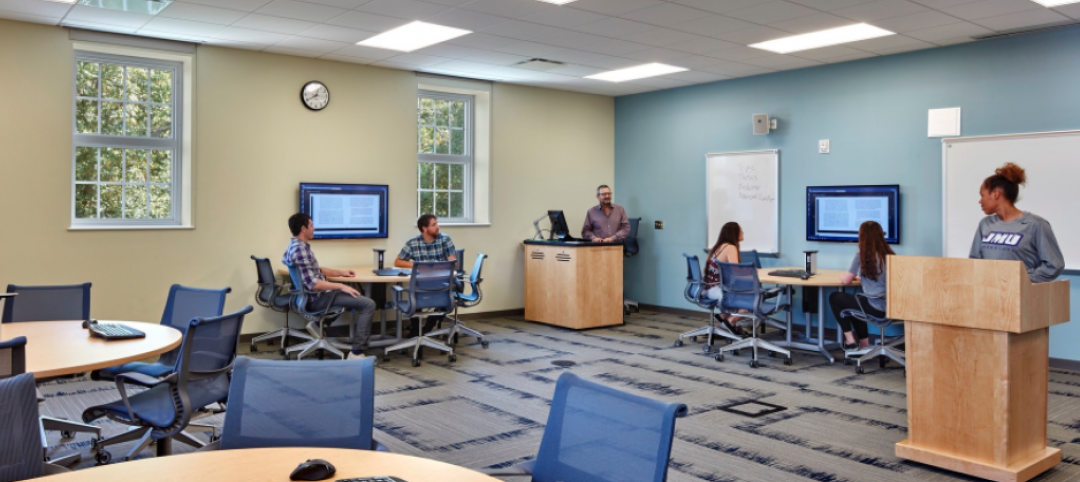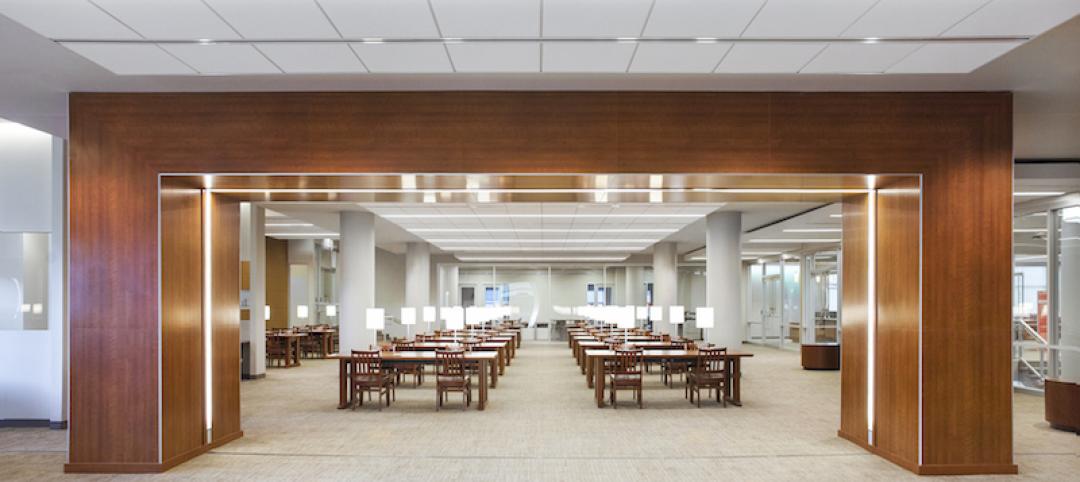A 100,000-sf mini-campus for teacher education is being created from three former school buildings at Winona State University in Winona, Minn. Once completed, the $25.2 million project will create a new section of campus and be home to the university’s College of Education.
Dubbed Education Village, the Leo A Daly-designed project retrofits three separate school buildings from different eras with learning spaces. The design creates learning environments that range from traditional classrooms with blackboards to advanced, technology-enabled active-learning classrooms, STEM labs, maker spaces, and special-education classrooms.
 Rendering courtesy Leo A Daly.
Rendering courtesy Leo A Daly.
The new mini campus includes Wabasha Hall, Wabasha Rec, and Cathedral School. Wabasha Hall is the new main hub of Education Village. It will function as a learning lab and gathering space with a large atrium, experimental classrooms, a child-care center, counselor-education facilities, and breakout spaces for group work.
Wabasha Rec is a former gym that will house physical education and adaptive-sports teaching programs. Cathedral School is a historic schoolhouse originally built in 1929. It will preserve low-tech classrooms relevant to the current spectrum of American schools and house post-graduate teacher-development functions, administrative offices, and the dean’s suite.
 Rendering courtesy Leo A Daly.
Rendering courtesy Leo A Daly.
“By placing a diversity of learning environments into a range of different building contexts, the design helps prepare future teachers for anything they will encounter in professional life,” says Joe Bower, Senior Architect in Leo A Daly’s Minneapolis office, in a release.
Kraus-Anderson is the construction manager for the project, which is expected to be finished in time for the Fall 2019 school semester.
Related Stories
Green | Jun 15, 2017
45-meter spiraling tower lets you walk above the trees
A 600-meter treetop path culminates with a 45-meter-tall spiraling observation deck.
Higher Education | Jun 7, 2017
Building for the future: Five trends in higher education projects
Preparing students for life after graduation has become the primary motivator behind construction initiatives at U.S. colleges and universities.
Higher Education | Jun 6, 2017
Funding remains a concern, but not always an impediment
Colleges and universities are adept at tapping a variety of sources—taxpayers, investors, donors, and, yes, students—to fund their growth ambitions.
K-12 Schools | Jun 5, 2017
PK-8 school will be Denver’s first CHPS-certified building
A “learning stair” will connect the cafeteria to the main level.
Higher Education | May 31, 2017
Space utilization in higher education: more than sf per student
There’s more to space utilization than how often a room is occupied. What happens inside an occupied room is just as important.
Education Facilities | May 22, 2017
Educational design taking lessons from tech firms
Recently, in educational design, we have seen a trend toward more flexible learning spaces.
Libraries | May 16, 2017
A New York-area community college adds new zest to its library
Wired seating and group work areas abound.
K-12 Schools | May 1, 2017
Seattle’s first vertically-oriented middle school breaks ground
The building will provide 74,289 sf of space across its five-story classroom bar.
University Buildings | Apr 26, 2017
UMass Amherst is home to America’s first CLT academic building
The building brings the architecture, landscape architecture, and building technology departments under one roof.
Higher Education | Apr 24, 2017
Small colleges face challenges — and opportunities
Moody’s Investor Service forecasts that closure rates for small institutions will triple in the coming years, and mergers will double.

















